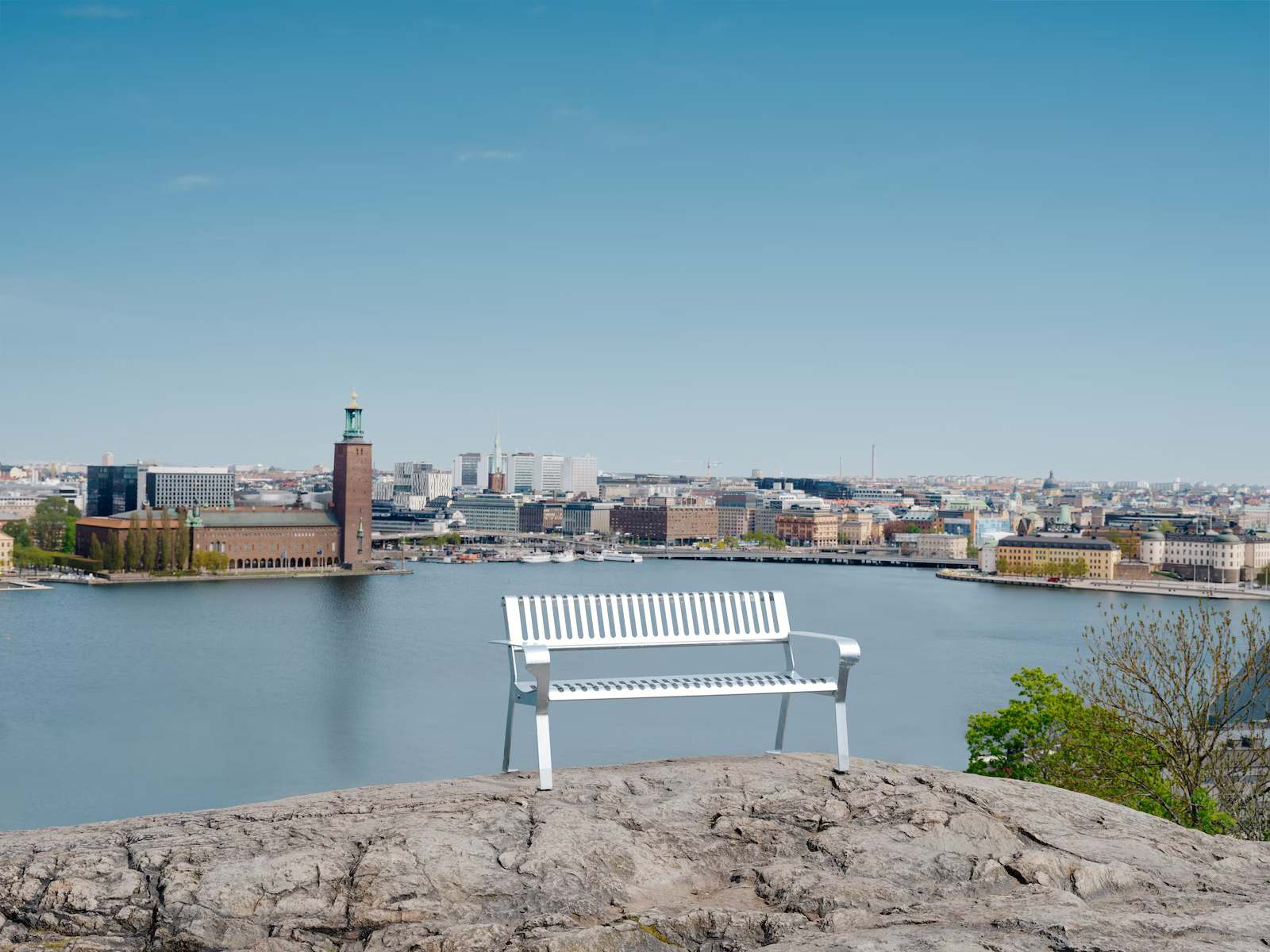They now present the results of the partnership: the TELLUS bench. Designed by the multiple award-winning and celebrated Swedish designer Emma Olbers, who has long promoted the issue of sustainability in the design industry.
“For me, it is important that form and design follow the planetary boundaries and aim to be part of the solution in the green transition. So, it´s great to work with companies that also want to be at the forefront and have actually realised that we are sawing off the very branch we are sitting on. These are companies that set Science Based Targets (SBTi) in order to help attain the goals of the Paris Agreement,” says Emma Olbers.
Olbers has worked as a designer, interior designer and creative director for the past 20 years. She believes that sustainability and product lifecycles are key concerns, and she strives to incorporate these aspects into all of her work. Olbers aims to design good products—good in every respect, including being good for our planet. She strives to design products with the smallest possible carbon footprint, preferably made from renewable or recycled materials and carefully manufactured to last a long time.
Like Olbers, Vestre also strives to be at the forefront of the green shift, and has always been quick to test new technologies and solutions in order to continually reduce their overall climate impact. As traditional steel production is based on the burning of coal, it results in very large emissions of greenhouse gases. Globally, it accounts for seven per cent of all CO2 emissions, while for Vestre alone, steel accounts for around 60% of our total carbon footprint.
”This is why it is one of our prime targets for decarbonization. We aim to be recognised as the world’s most sustainable furniture company and to drive forward the development and transition to more sustainable materials and production methods. To get there, we need to be ahead of the curve. Early estimates indicate that converting all our steel to fossil-free could cut our overall footprint by around 60 per cent,” says Øyvind Bjørnstad, Chief Sustainability Officer (CSO) at Vestre.
“Vestre’s goal in using SSAB’s fossil-free steel is to inspire more people to follow suit. At Vestre, we live by the motto: ‘Everyone can save the world. A little’. This fits in well with the visions adopted by both Emma Olbers and SSAB. A natural partnership between strong parties who all work towards the same goal,” says Bjørn Fjellstad, CEO at Vestre.
TELLUS is a timeless and inviting bench that encourages people to sit down and take a break, enjoy a cup of coffee or engage in good conversation. The design makes it equally suitable for both parks and more urban environments. The bench got its name as a result of it being designed “with Tellus in mind”, in accordance with their planetary boundaries.
“The main aim was to create a bench with the smallest possible carbon footprint. An outdoor bench for public environments must also be capable of withstanding a lot of wear and tear. A strong construction is therefore important. We have striven to use as little materials as possible, while still retaining the strong construction. I believe it should radiate both a metallic feel and a tactility, but also look welcoming; hence, the wide armrests which are visually inviting and functionally provide space for a coffee cup,” explains Olbers.
“TELLUS is a great example of what steel can be used for. There isn’t much that is more sociable, tangible and accessible to people than a park bench in a public space. A place where people can sit down, talk to each other and get to know each other,” Fjellstad adds.

